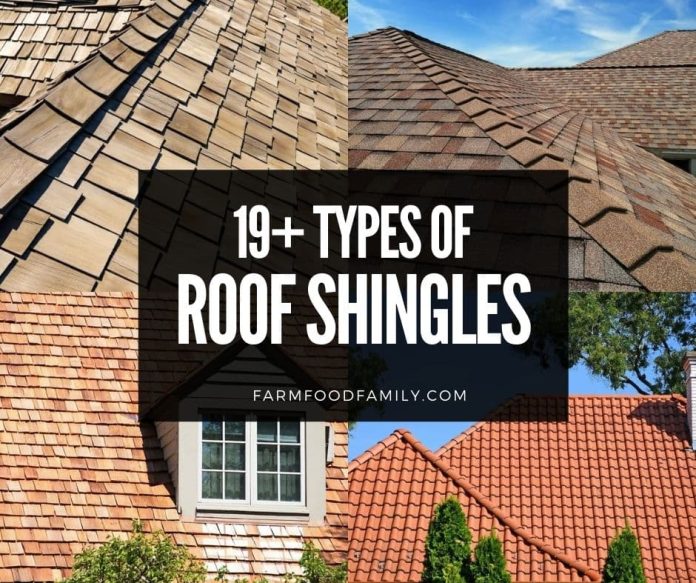19+ Different Types Of Roof Shingles (Materials, Brands, Pros, Cons, Cost)
Building a home is not an easy task. It requires an excellent decision-making skill to contemplate on what and what not to put into your homes.
From your choice of colors, different kinds of furniture, tiles, paint to the roofing of your homes or building, it takes a lot of time especially if you need to compress everything within a budget.
Speaking of roofing, did you know that there are different types of roof shingles? In this post, we look at some of these types for you to have a rundown of what to choose should you opt for one.
Related: 25+ Parts Of A Roof And Their Functions (Explained and Pictures)
In this article:
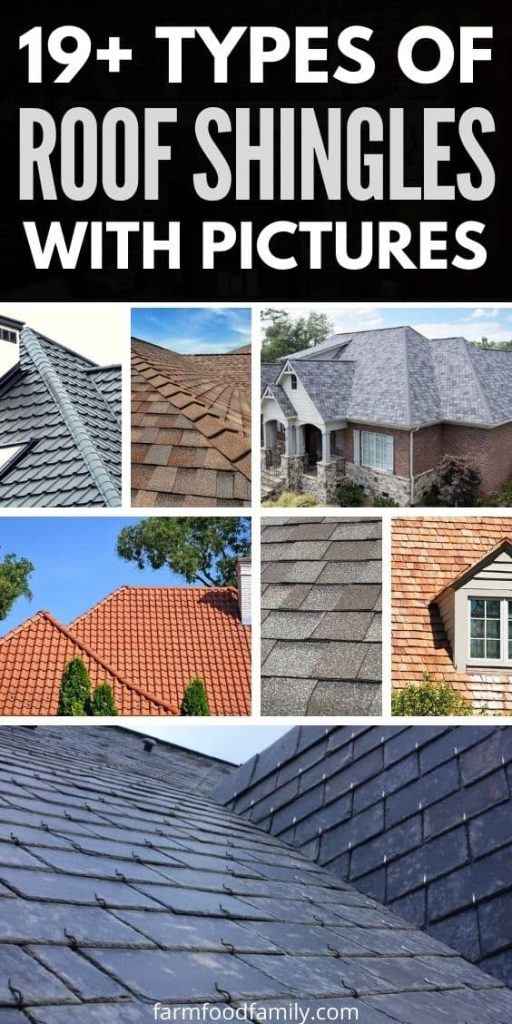
What is a roof shingle?
Roof shingles are popular as an aesthetic addition to roofing. They are rectangular pieces of asphalt applied from top to bottom of the roof or overlapping to provide full coverage. Roof shingles are basically installed for waterproofing. They are also very cost-effective and easy to install.
The materials for roof shingles include metal, slate, clay tiles, and cedar. It could last for 10-30 years depending on the style and type of roof shingle you use. They are lightweight and very workable. If you have a knack for construction, you can install them on your own.
Types of roof shingles (pros, cons, cost)
Thinking about the best material for your roofing needs? Here are the types of roof shingles for you to choose from.
Related: 13+ Different Types Of Roof Vents With Pictures
1. Asphalt shingles
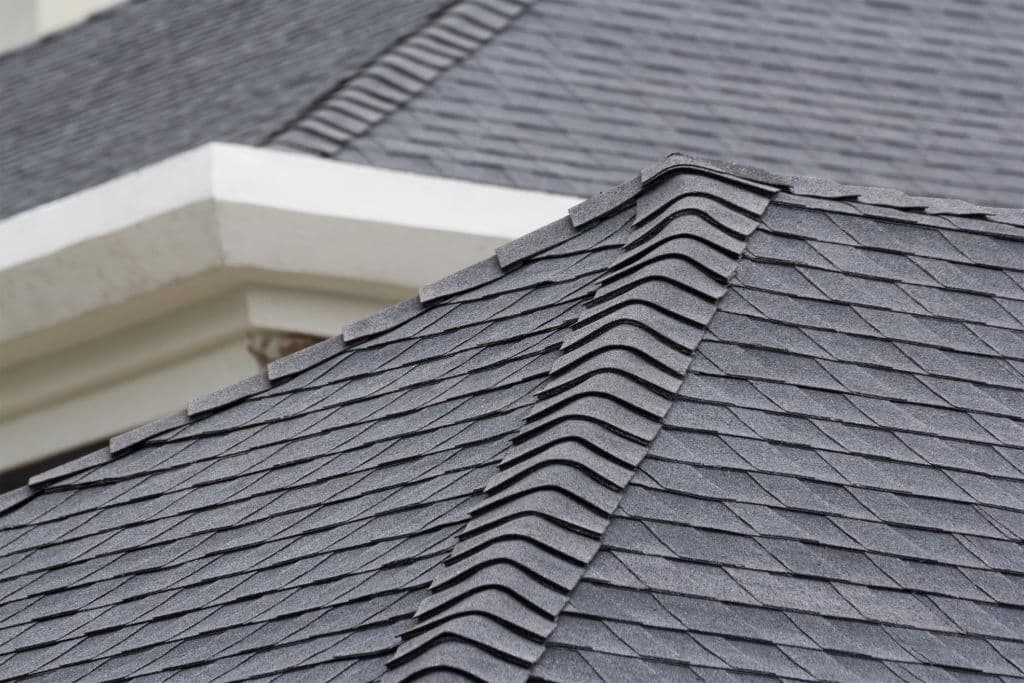
This one is considered as the “go-to” roofing by a lot of homeowners. Aside from its low-cost pricing, it also comes with a lot of designs that can add to the aesthetic of a home. It is also easy to install, repair and replace so it is cost-effective on installation fees.
The main upside of the asphalt shingles is that they divert UV rays away from the roof to give you a cooler feel. There are three types of asphalt shingles: the 3-tab, the architectural and the organic shingles.
On the downside, it only lasts for twenty years and they may be easily damaged by strong winds. Hence, this is the perfect choice for locations with milder climatic conditions.
| Pros | Cons | Cost |
| Cost-effective | Offers moderate protection | $80-100 per square foot |
| Easy to install | Less resistance to wind and rain | |
| Lots of color choices | Not that eco-friendly | |
| Low maintenance | ||
| Easy to repair |
2. 3-Tab
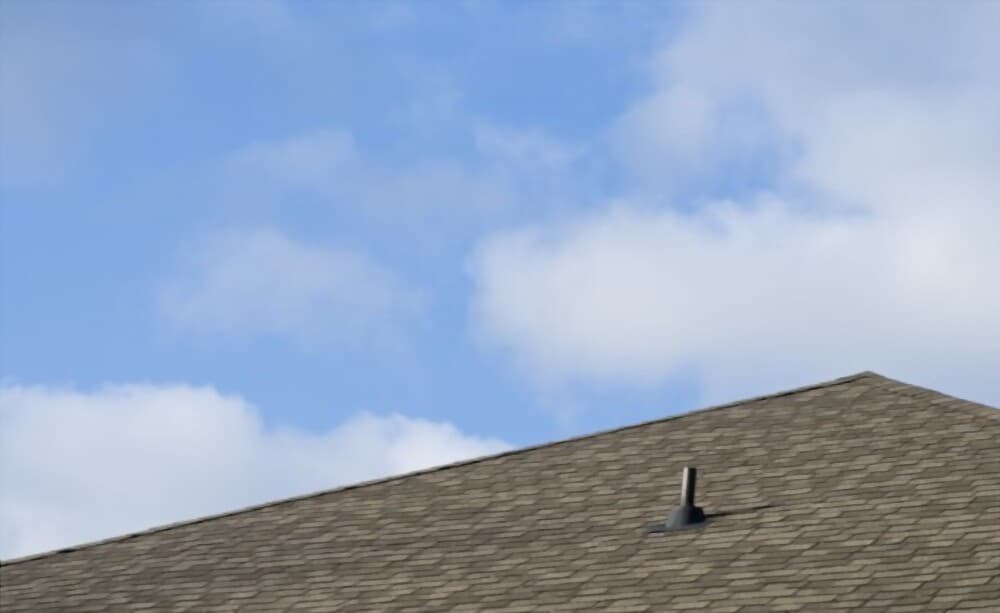
This type of roofing has a unique design since it gives three different shingle looks when installed. It is considered inexpensive compared to other types and is also easy-to-repair.
It is not, however, the most recommended shingle type. For one, it is not made for harsher climates. It also has a relatively short lifespan and generally shorter warranties. When installed, they need proper ventilation. And overall, they do not add resale value.
| Pros | Cons | Cost |
| Cost-effective | Offers moderate protection | $2300-3500 with installation and labor cost |
| Easy to install | Less resistance to wind and rain | |
| Low maintenance | Prone to repairs |
3. Architectural Shingle
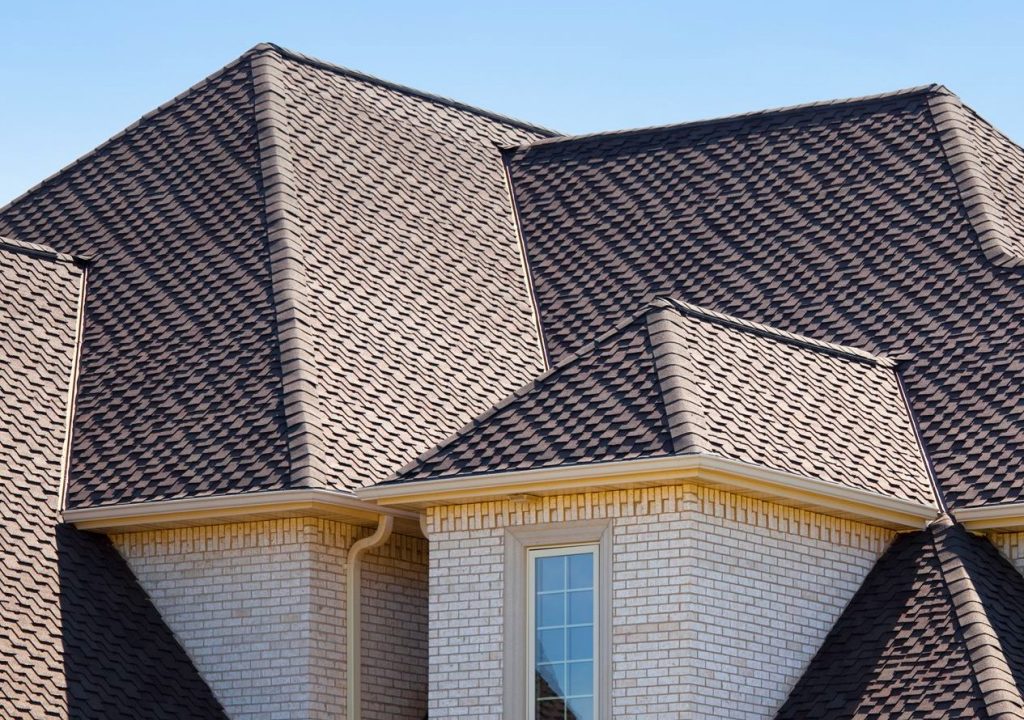
This type of roofing is also called the laminate shingle or dimensional shingles. It is popular among builders and homeowners for it resembles a cedar or a slate.
It provides high aesthetic value in homes and it is extremely durable. This type of roof is suitable for those who want to hide any imperfection in a roof.
Lifespan wise, it could go for up to 30 years. They also do not crack or curl up easily even if they are exposed to direct UV rays. Nonetheless, they can still be affected depending on the impact of outdoor elements.
Also, it does not crack and curl easily even with the direct UV rays and the changing of weather though they can still be affected depending on the impact. It is also known for its lifespan which lasts up to thirty (30) years.
However, they cost more and are a lot heavier than the asphalt. So when choosing this type of shingle, make sure that your house can support the weight of an architectural shingle and get ready with your budget as the cost ranges from $13,500-$21,500 in total but it still depends on the slope and size of your roof.
| Pros | Cons | Cost |
| High aesthetic value | Expensive | $13,500-$21,500 with installation and labor cost |
| Easy to install | Heavier compared to ordinary asphalt shingle | |
| Durable |
4. Hip and Ridge
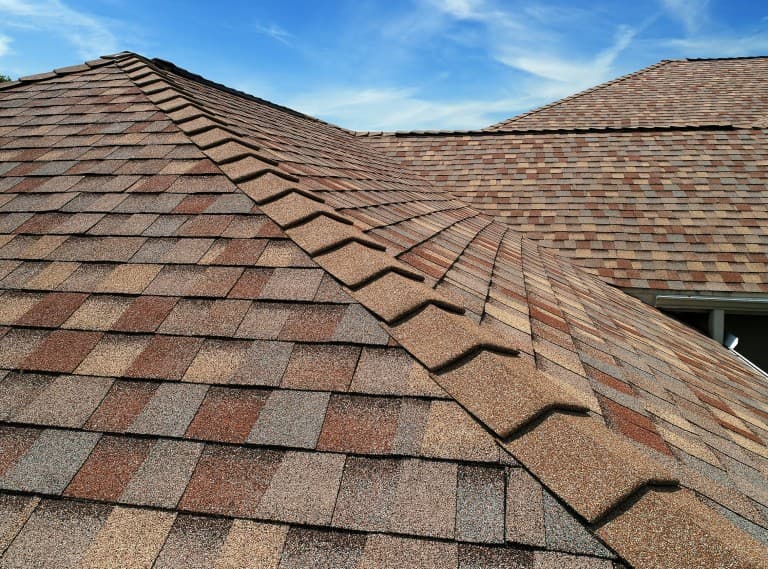
This type is considered to be the second most popular roof style. They have four sloping sides with no gable ends. All its sides slant downwards towards the wall at a coherent angle.
The adjoining sides that meet the external angle are known as the ‘hip’ of the roof. Hip roofs are usually rectangular in shape. This type of roofing is visually appealing which can attract a passerby and even other neighboring homeowners.
If you want to have a more leeway for your interior design, this is the best roof shingle choice for you. Moreover, this is a perfect choice if you live in a location where high winds and heavy snowfalls are predominant. This is also excellent for hurricane-prone areas.
| Pros | Cons | Cost |
| Gives extra attic space | Harder to install | $20,000-50,000 including installation costs and estimated depending on roof slope and coverage |
| Offers more ventilation | Requires professional installation only | |
| Offers reliable drainage | Expensive | |
5. Metal Roofing
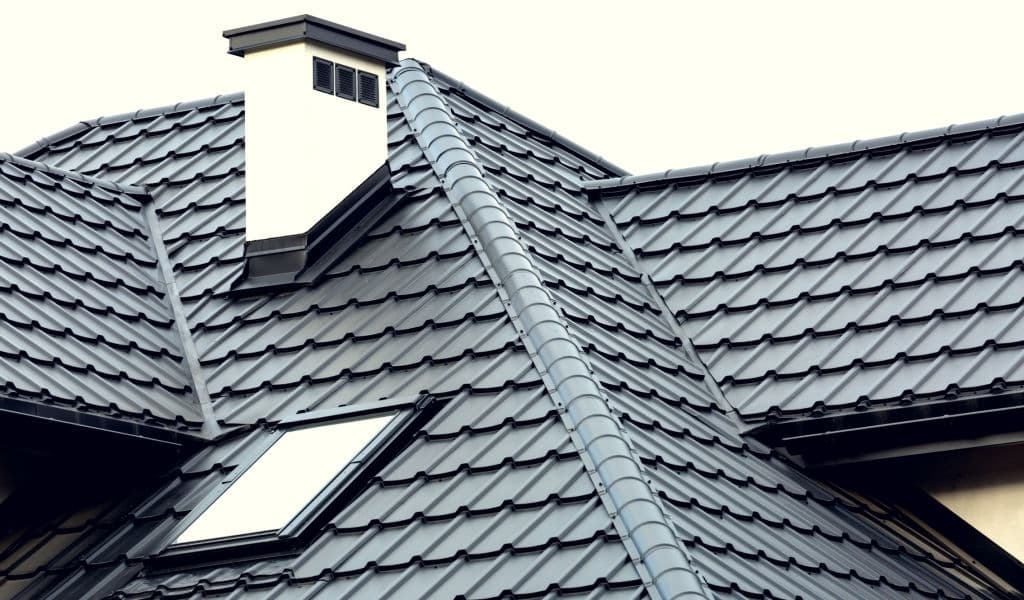
Metals, just as it’s known for, are durable when used as a material to any construction need. They are considered a better roofing option for flat and steep rooflines.
They can withstand the harshest outdoor conditions and they are also very affordable and could last for up to 50 years.
On the downside, some contractors do not recommend metal roofing because they can be prone to repairs especially because of water leaks. Other than that, installing one would require you to build an extra structure to support the material.
In terms of maintenance, you also have to coat it every now and then to avoid rusting and corrosion.
| Pros | Cons | Cost |
| Can withstand harsher climates | Prone to leaks and repairs | $2000-17000 with installation cost. |
| Durable and long lifespan | More expensive than asphalt | |
| Does not rust or corrode | Requires support structure |
6. Standing Seam Panels
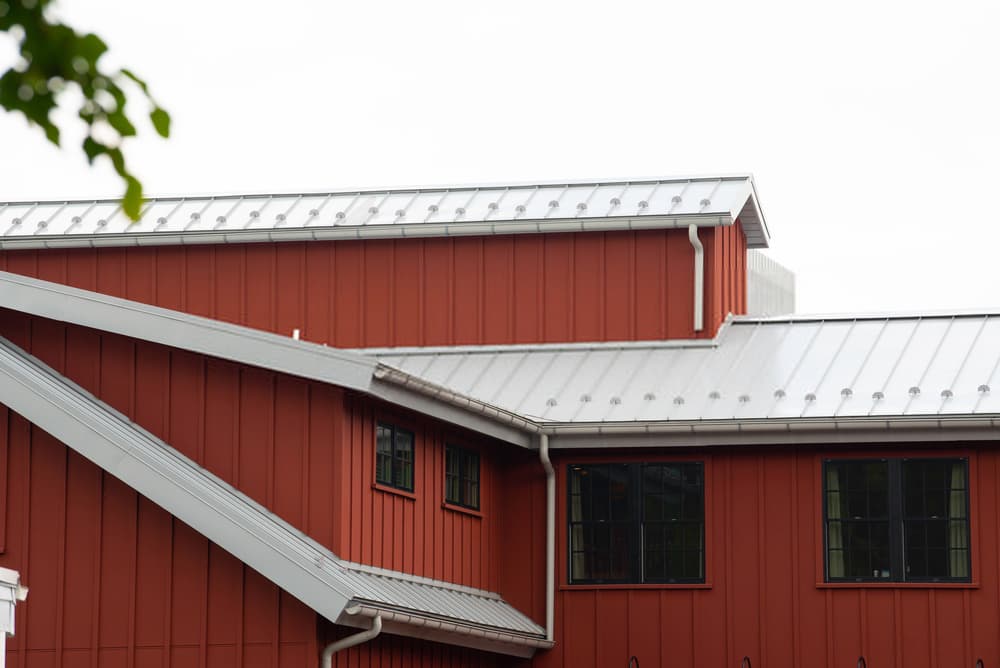
This type of roofing is considered to be the best type but also the most expensive one. It was usually used in business and commercial buildings but is now popular among homeowners too.
Its main material is made out mostly of aluminum more than metal because metals rust which can be prone to damage and roof leakage.
Standing seam panel roofing has a lot of advantages which include their ability to make your home cooler. And what makes it popular is that these types of roofs are built to last. However, it cannot be installed in a flatter roof and is very difficult to install since it requires a builder with a larger knowledge about this kind of material.
| Pros | Cons | Cost |
| Offer a lot of ventilation. | The most expensive roof shingle type. | $21,000 to $33,000 including material and installation costs. |
| Keeps the home cool. | Requires professional installation. | |
| Durable and with a long lifespan. | Costly upkeep. |
7. Stone-Coated Metal Roofing Shingles
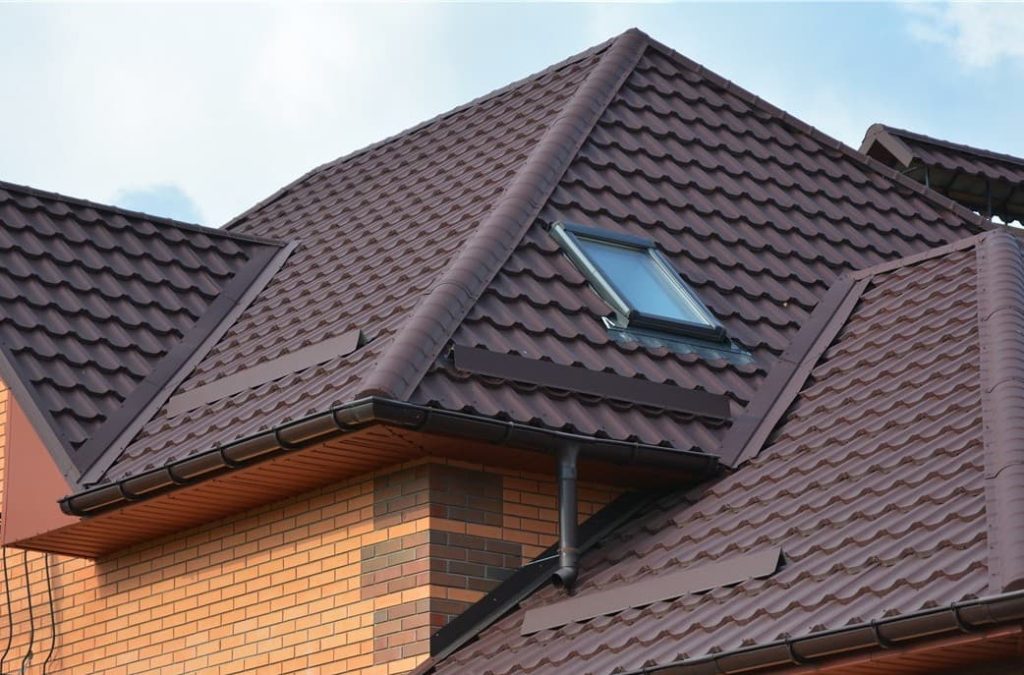
This type of shingles is a combination of industrial strength steel and traditional roofing materials like shingles, shakes, and tiles. As ideal as it may sound, it is, however, very expensive.
On the upside, it has one of the longest lifespans and is very durable being able to go up to 70 years. This one is considered as a good investment for commercial buildings.
The best thing about this is that it could withstand even the harshest climates. It also comes with a wide range of textures, designs and colors. Most of all, it is low-maintenance. Others would even say that it could stay in good condition even in neglect.
| Pros | Cons | Cost |
| Very long lifespan. | Noisy when it rains. | $850-1,450 per square foot. |
| Can withstand harsh climates. | Very expensive. | |
| Lightweight and low-maintenance. | ||
| Offers a variety of designs, textures and colors. |
8. Impact-Resistant Roofing Shingles
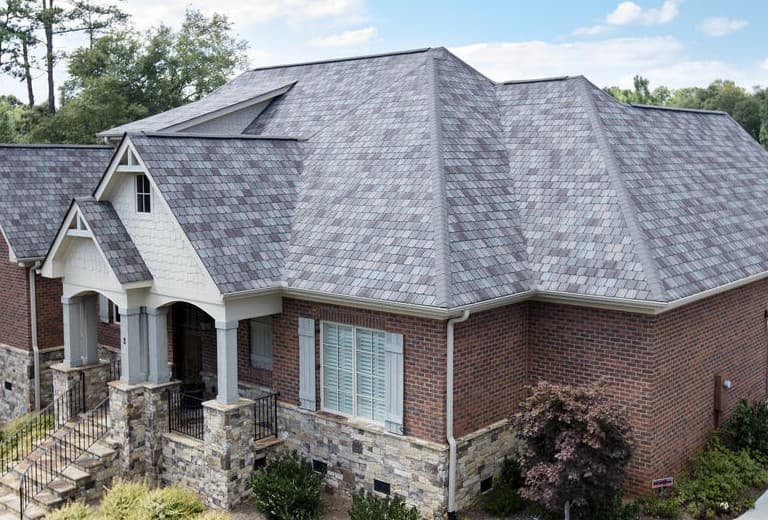
From the name alone, one can already infer that this type is specially designed to withstand harsh weather conditions.
They have a relatively long lifespan at 30-50-years. Nonetheless, if it is regularly exposed to high winds and storms, its performance and longevity might be affected.
As far as the advantages are concerned, you can depend on it to offer a full-coverage protection to the home especially in allowing good ventilation to flow. It also comes with a full range of colors, textures, and sizes. Perhaps, the only downside would be its expensiveness.
| Pros | Cons | Cost |
| Durable and with a long lifespan. | Costly to maintain. | $2,400-$2,650 per 1,600 square feet. |
| Can withstand harsh climates. | Very expensive. | |
| Offers a variety of designs, textures and colors. | ||
| Offers good ventilation. |
9. Wood shingles
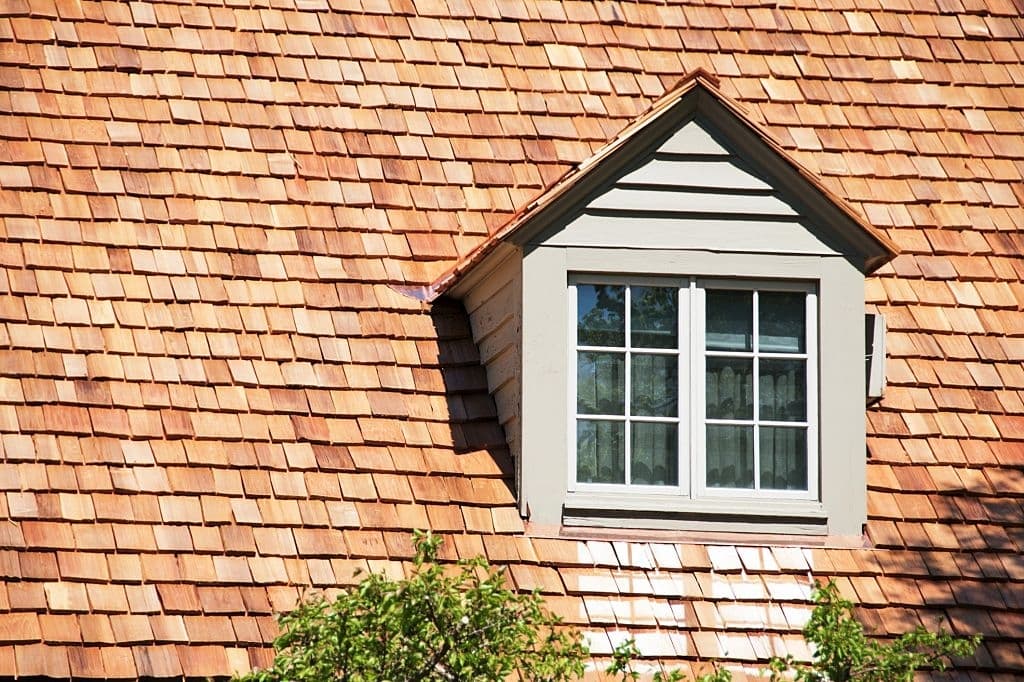
This type of roof shingles is aesthetically appealing, hence, very popular to homeowners. They are made from hardwoods and so expect them to be more expensive than the others on this list. Installation is also extra laborious, adding to the higher price point of this type of shingle.
But as far as longevity is concerned, you can depend on it to last for more than 60-years. It is also easy to repair and the materials needed for repair are more accessible.
The maintenance and upkeep, however, are more demanding since they are more prone to damage from moisture. Resealing is also required every now and then. Nonetheless, you can opt for simulated wood shingles, although they are not essentially wood but highly resemble hardwood.
| Pros | Cons | Cost |
| Durable and easy to install. | Prone to molds. | $6,800 – 20,000 with installation cost. |
| Long lifespan. | High maintenance. | |
| High aesthetic value. | Flammable. | |
| Offers good ventilation. |
10. Wood Shake Shingles
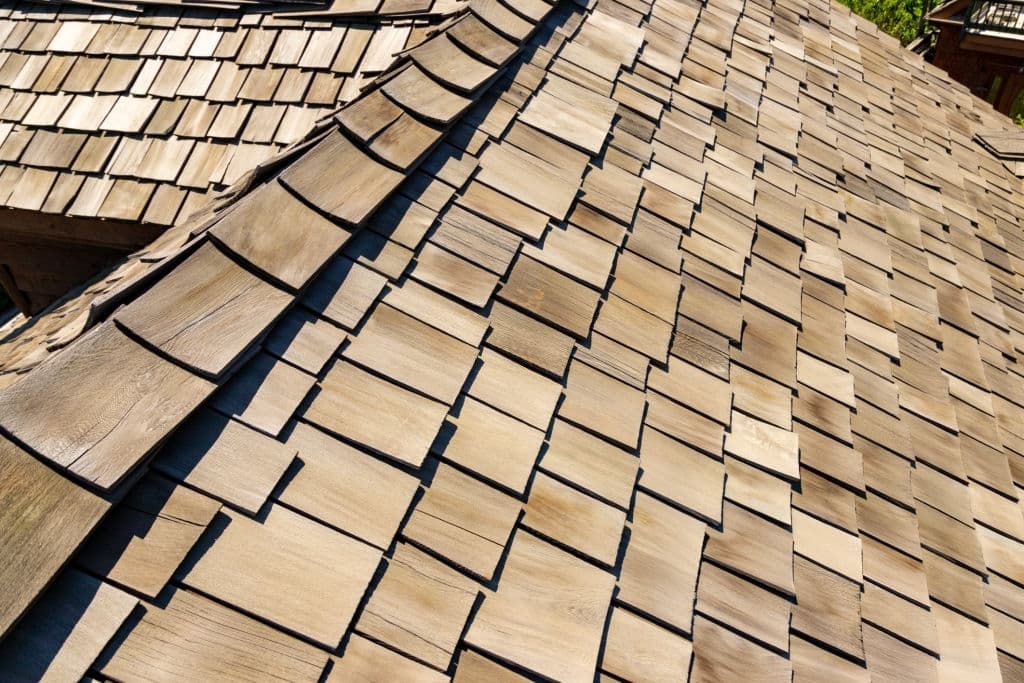
Wood shingles are different from wood shake shingles. This one has rougher staggered edges which creates gaps where moisture, unfortunately, leaks through.
As such, opting for this would mean that you have to install layers underneath to prevent leaks from seeping in. Since it is still essentially made from wood, this is eco-friendly, attractive and is an eco-friendly choice.
This one last for 50 years and perhaps, its only disadvantage is its expensiveness and that it is more laborious to maintain. It is only quite flammable so it has to remain dry.
| Pros | Cons | Cost |
| Durable. | Expensive. | $450 – $900 per square foot |
| Long lifespan. | High maintenance and flammable. | |
| High aesthetic value. | Flammable. |
11. Tile shingles

This is another expensive roof shingle type. It comes in three major types: ceramic, concrete and bituminous. It is more delicate to install and its wide range of price points depend on your location and the level of customization that you want to incorporate in it.
Homeowners with the budget nonetheless, choose it still because of its known longevity, being able to last for more than 80-years.
Aside from this, they are also easy to repair, remove, and replace. It also offers a good protective coverage for the home, especially the attic space and the ceiling. They do not allow moisture to seep in but at the same time, also offers a lot of ventilation. It is also very much used among historical architectures.
| Pros | Cons | Cost |
| Recyclable. | Clay tile is expensive. | $17000-60000 depending on the level of customization. |
| Comes in a lot of color and style options. | Heavy weight. | |
| Eco-friendly and impervious to rots. | Harder to install. |
12. Clay Tile Shingles

From the word clay, it can be molded into different shapes and are made with light colors which keeps them soothing to the eye. It is often used by homes with a colonial Spanish or Mediterranean style.
Its advantages include, it is environment friendly, excellent protection to hot climates, and increases the aesthetic of a home.
However, as it works excellently in hot areas it does not go well in lower temperatures. It is also heavier and expensive when installed. Clay tile shingles are also prone to roof leaks when there is a crack from a broken tile.
Make sure that your homes are properly inspected or installed by professional builders because this may not be advisable for some who lack support since it is heavy in nature.
| Pros | Cons | Cost |
| High aesthetic value. | Expensive. | $800 – $2,500 per square foot (without installation cost). |
| Comes in a variety of shapes, and sizes. | High maintenance. | |
| Eco-friendly. | Requires additional support. | |
| Made for hotter temperatures. | Does not fare well in low temperatures. |
13. Concrete Tile
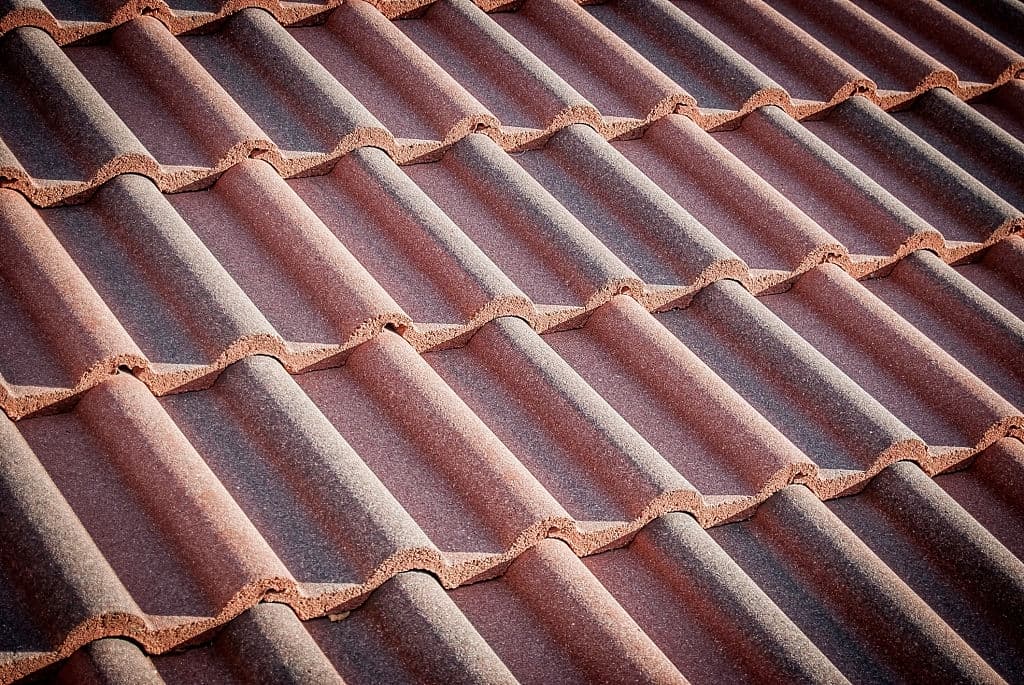
This type of roofing is cheaper and can be an alternative to clay tile shingles. They are made from water, sand, and cement. They are also considered as eco-friendly because they are recyclable, reducing landfill waste and more. As for coverage, they offer an all-around protection to the home. They are also impenetrable when it comes to moisture.
Perhaps the downside to concrete tiles would be that they are not that helpful in ventilation. They are not made for hotter environments because they would make the room hotter by the day. Nonetheless, expect this to last for more than 50 years. It is also relatively expensive.
| Pros | Cons | Cost |
| High aesthetic value. | Quite expensive. | $850-50,000 per square foot with installation costs but depending on customization level. |
| Comes in a variety of shapes, and sizes. | Not made for hotter temperatures. | |
| Eco-friendly. |
14. Slate shingles
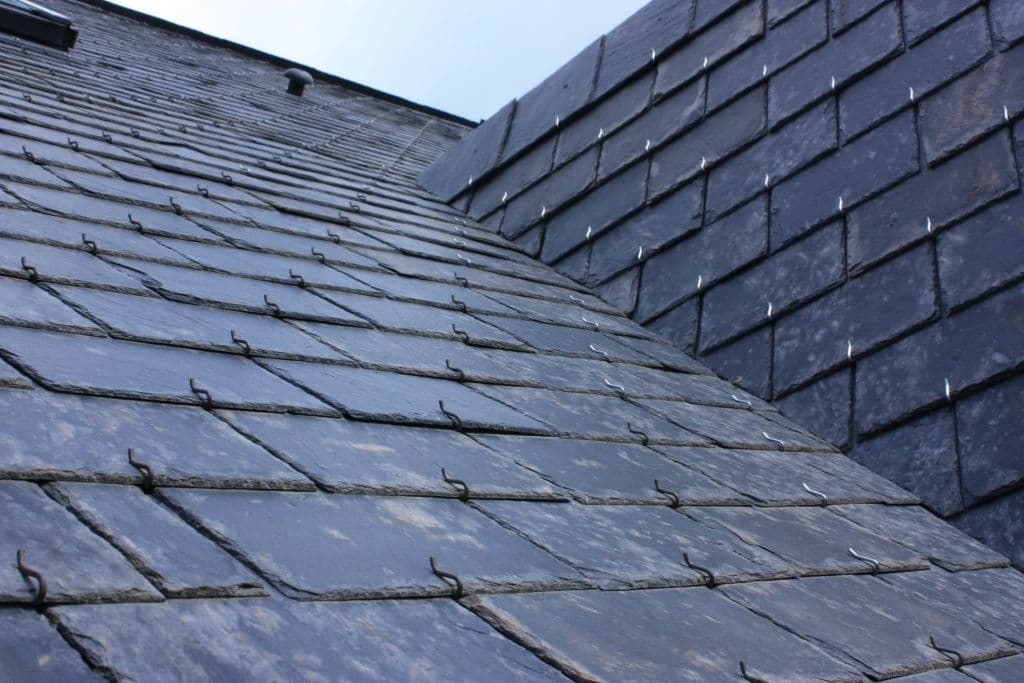
This type is known for their durability which lasts up to 150 years. They are made from a certain type of stone which is processed to make it into shingles. Slate shingles, unlike other types, are both water and fireproof.
Aside from being naturally made, it Is also visually attractive, adding resale value to the home.
Nonetheless, it is quite expensive, ranging from $200 – $650 per square foot. It is also not suitable for all types of home because it is heavyweight. Other than this, it is also not that accessible in the market so it is hard to repair and replace.
Tap professional roofers only because this one is very challenging to install and the damage would be costly in the long run.
| Pros | Cons | Cost |
| High aesthetic value. | Expensive. | $5,000-23,000 per square foot with installation costs. |
| Durable and long-lasting. | Hard to install and procure. | |
| Eco-friendly and energy efficient. | Few colors to choose from. | |
| High resale value. | Complex repairs. |
15. Rubber Roofing
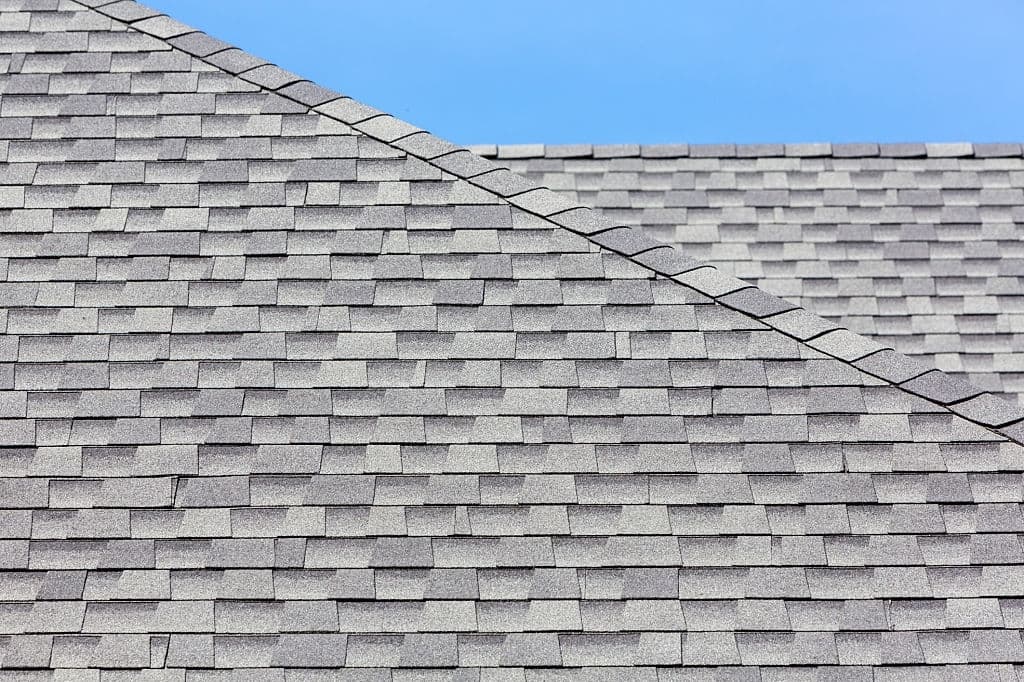
Technically, it is called the EPDM which stands for ethylene propylene diene monomer. This type of roofing is mostly used for low slope roofs. This type is popular because of its waterproofing material which makes them water, fire and high wind resistant but are not impact proof.
Another rubber material using this type which is called TPO, which is also a solid choice, but cracks over time. Rubber roofing is also eco-friendly which reflects UV rays and reduces energy cost. It costs fairly-expensive with a total of $8,000-$14,000 including per square and installation.
| Pros | Cons | Cost |
| Durable and lightweight. | Issues on color fading. | $8000-14000 per square foot with installation costs. |
| Low maintenance. | Requires professional installation. | |
| Eco-friendly. | Delicate material. | |
| Long lifespan. |
16. Copper Shingles
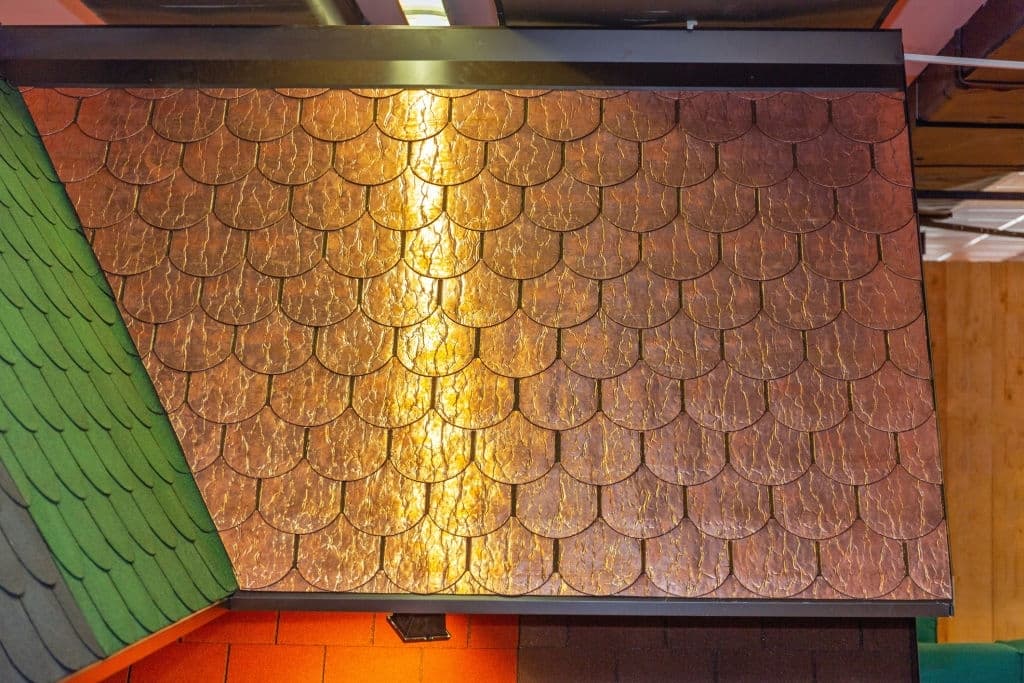
Present in historical buildings and popular to homeowners who want an old-world charm, this type of roofing is very recommendable because it lasts for hundreds of years. It Is also considered lightweight and has so many styles.
What makes it a better choice is that it hardly needs maintenance but would still look beautifully.
Because of its longevity, this type is also one of the more expensive ones. The costs are at $1,100 – $1,500 per square foot. Also, it will take you lots of time to find an expert using copper roofing, thus, might not be advisable for you.
| Pros | Cons | Cost |
| Long-lasting and very available in the market. | Very expensive. | $3000-18000 including installation costs. |
| Lightweight and comes with a lot of shapes and designs. | Not available in bulk numbers. | |
| Does not need maintenance. | Requires professional roofers. | |
| In time, they will give you a patina. |
17. Grass (Green) Roof
This type is highly environmentally friendly. It is best for places where climate fosters. As the term implies, it is made for roof plant, herb and flower growing, giving a unique look to the home, overall.
Given this, it comes with a lot of upsides. One of these would be good airflow, security in changing weathers, and good insulation for both the heat and cold. They also offer good insulation, blocking of noise during heavy rains.
However, since we are dealing with plants, it needs a lot of upkeep. When the plants wither, it would not have the best aesthetic appeal. Continuous watering can also cause leakage and damage to the roof overall. In hindsight, it is also quite expensive.
| Pros | Cons | Cost |
| Improves home’s aesthetic appeal. | Requires a lot of maintenance. | It depends on the coverage of the roof and the types of plants raised there. |
| Flexible for changing weathers and are natural insulators. | Watering regularly is not a sound choice. | |
| Good for soundproofing. | Expensive and challenging to install. | |
| Perfect for compact homes. | ||
| Improves air quality. |
18. Composite Shingles
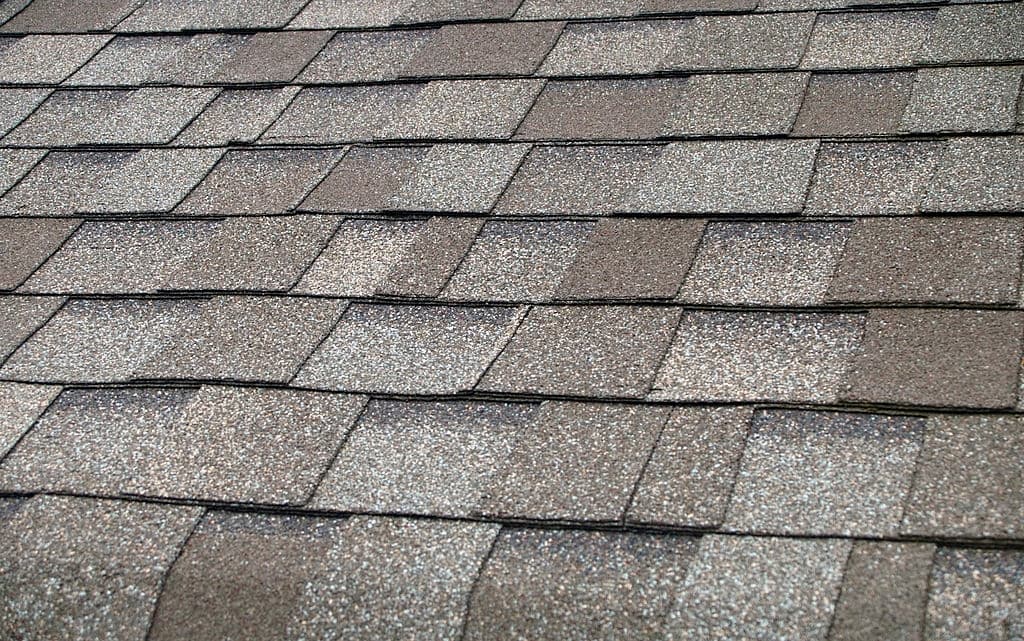
This type is made from a mixture of new and recycled plastics, wood, paper, asphalt and fiberglass. They are more expensive and lightweight compared to asphalt but last longer.
Composite shingles are made to copy all types of roofing types. However, composite shingles do not perform well in areas with low temperature.
This type costs $300 to $1,600 per square. When choosing this type of roofing, make sure to find or hire a professional roofer as this can also damage the roof of your house when not properly installed.
| Pros | Cons | Cost |
| Affordable. | May easily break. | $700-15000 with installation costs. |
| Easy to install. | The smaller particles may be dislodged during harsh climates. | |
| Keeps the roof algae and mold free. | Too much UV exposure can crack it. | |
| Fire and high wind resistance. | Questionable lifespan. |
19. Solar Shingles
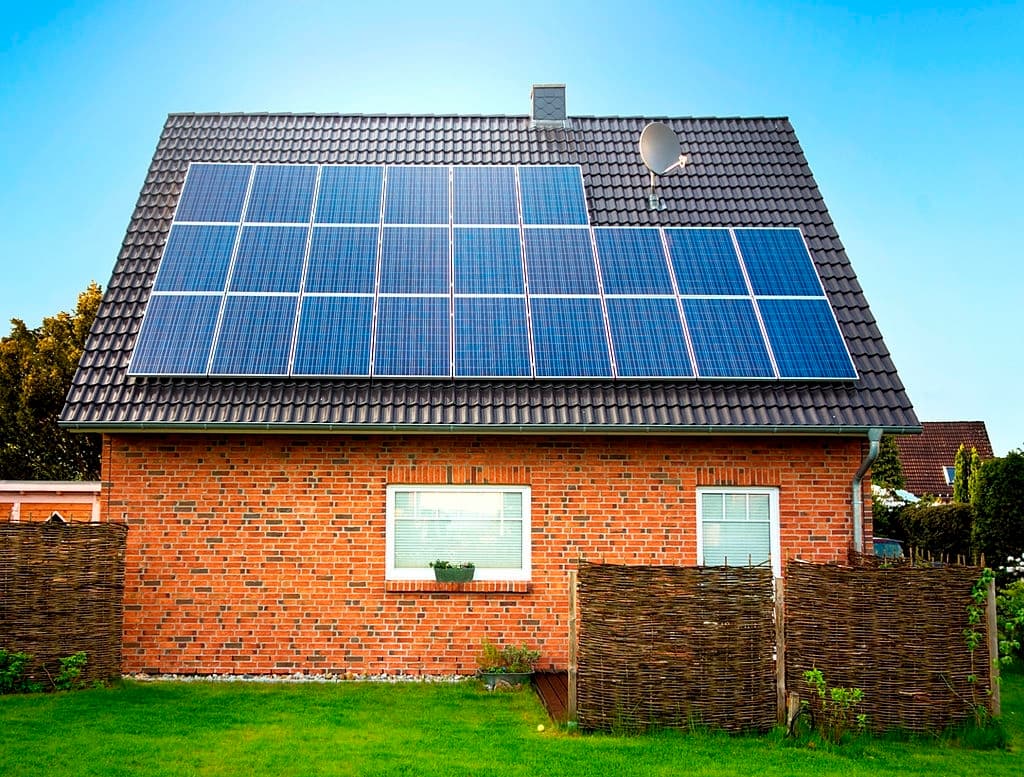
Compared to solar panels, Solar shingles are used to build a roof. Costs are higher than the asphalt roofing but the price depreciates as technology improves.
While it is highly environmentally friendly roofing, solar shingles also allow you to have a completely normal-looking roof.
Solar shingles absorb energy from the sun, some of which may be stored in a solar battery and some of which is converted into useful alternating current which allows to power up appliances and devices at times. Solar shingles cost $2,100 to $2,500 per square. Costly but performs well and lasts long.
| Pros | Cons | Cost |
| Aesthetically pleasing | Not that available in the market because it is a fairly new technology | $15000-70000 with installation cost; depends on the brand. |
| Easy to install | More expensive | |
| Cost-effective and energy efficient | Depends on the slope of the roof | |
| Best choice for roof replacement |
How Much Does Asphalt Roof Shingle Repair Cost?
Asphalt roofing is popular nowadays because it is very affordable as well as its installation. Therefore, the cost of repair in this type of roofing only costs for an estimate of $329 and $1,449 and can be lower if a small part of it is only for repair.
Shingles vs. metal roof
In terms of longevity, metal roofs are more durable because they last up to 50 years while shingles because of the changing temperature and other variables, they only last for 30 years at maximum.
In terms of the cost, just by measuring its durability, shingles are cheaper than the metal roof. Also, metal roofs are known to be more eco-friendly and more efficient than shingle, but shingles are easier to install than metal roofs since metal roofing requires an expert in installing.
Roof Shingle Brands
1. GAF
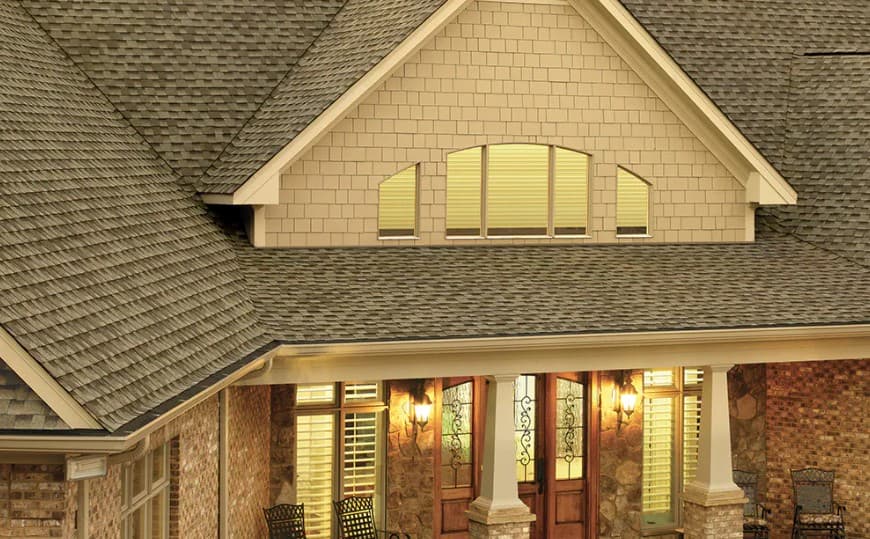
Best for residential and commercial roofing materials. Provides 3-tab, architectural and luxury asphalt but has a very limited style and color options.
This one is a roofing brand that stands out because it has the most popular asphalt shingle lines today which is the Timberline Roofing Shingles.
GAF is also popular among homeowners and builders since they provide materials which are long used and the longest recorded has a lifespan of 50 years.
They also provide full replacement within the time of warranty when you get an entire roof system with your new architectural or luxury shingles.
2. Owens Corning

This brand manufactures residential and commercial insulation, roofing, and fiberglass composite materials.
Just like GAF, they also offer 3-tab, architectural, and luxury asphalt shingles for residential roofing and also offers a 50-year longevity of roofing materials and also provide full replacement within the warranty period. With its 5 architectural asphalt shingle lines, unlike GAF, you will be able to find the style and different colors you can choose from.
3. Certainteed
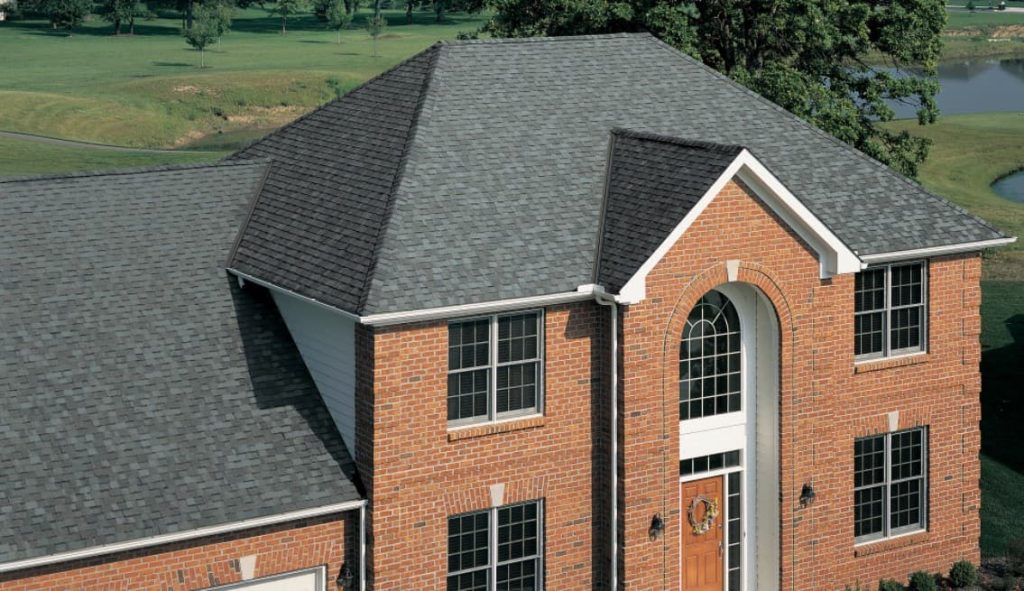
This type of brand is best for exterior and interior building products such as roofing, siding, fence, decking, railing, trim, insulation, gypsum, and ceilings.
They also offer a variety of styles and colors of the three types of asphalt shingles which you can choose from when planning to purchase one for your homes.
Whichever you like from style to color, CertainTeed is one call away as they can provide you with so much variety of roofing materials.
If you hire a roofer or contractor that is certified by Certainteed, you will get the benefit of having it in full replacement in case damaged within the warranty period. Just like the first two brands, they also provide long lasting materials with a lifespan of 50 years.
4. TAMKO

This brand specializes in residential primarily (the 3-tab, architectural and luxury asphalt shingles) and commercial roofing products as well as waterproofing products, cement, and coatings. As they do not offer much asphalt shingle style, TAMKO offers a steel shingle line that is called Metal Works.
The line includes StoneCrest Slate, Stone Crest Tile, and Stone Crest Aston Wood Cedar Shake. They provide styles which other brands also offer but in the material of metal instead of asphalt. Also, just like the other brands, they also provide enhanced warranty when getting the entire roof system.
5. Atlas
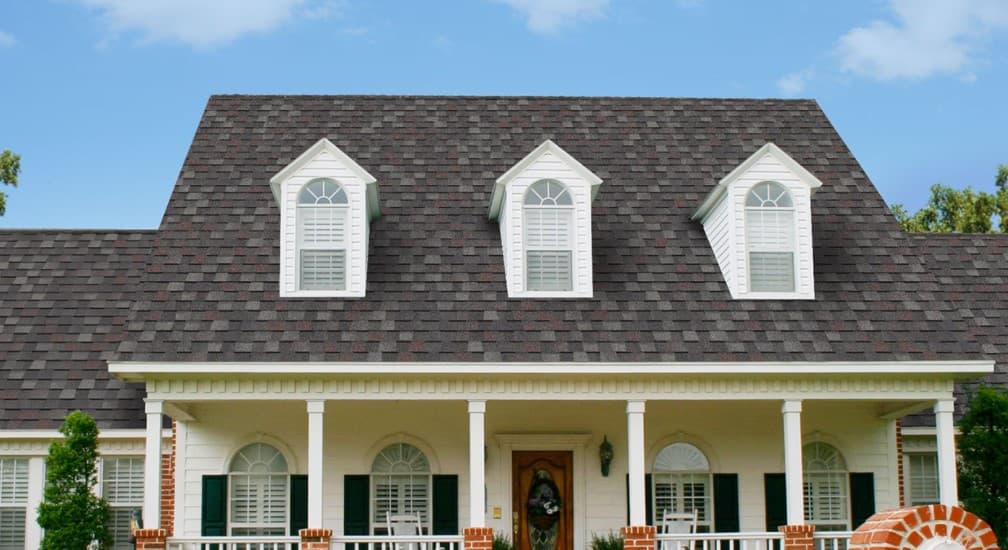
This brand produces high quality roofing and construction materials. Just like other brands, they offer 3-tab, architectural, and luxury asphalt shingles.
This brand has a lot of commonalities among the other brands listed above but what sets Atlas apart is their clear process of putting scotch guard on some of their shingles.
This means Atlas’s Storm Master Shake shingles, Storm Master Slate shingles, and Pinnacle Pristine shingles come with a lifetime guarantee that they’ll never get streaks on them. They also give warranty for the life of the roofing materials when you get an entire roof system.
6. Pabco
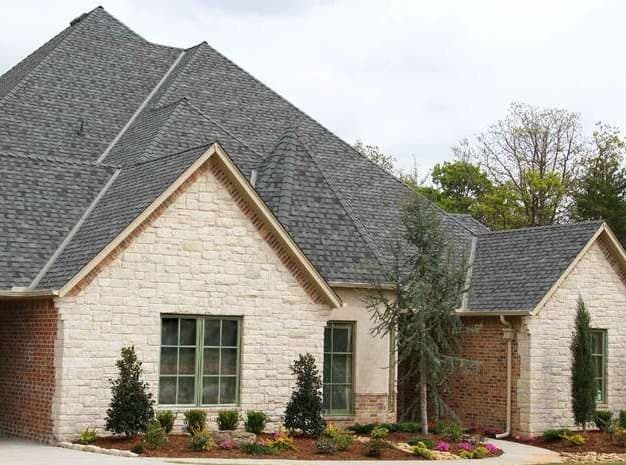
This brand is not that popular compared to GAF, Owens Corning and Atlas but PABCO’s shingle line is marked as cost effective and is mostly known for the beautiful designs it produces. The company’s range of shingles includes signature cut shingles, laminated shingles, solar reflective shingles and 3-tab shingles categories.
Unlike other brands, PABCO offers variety in terms of color, durability, and look on their seven shingle styles. Also, they are commonly known around the world since their products are sold internationally.
Factors to consider when choosing roofing shingles
When choosing the best roofing shingles for your homes, it is best to consider the factors listed below:
1. Roof Slope
To narrow down your list of the materials, pay attention to your roof pitch. The ability of your roof to drain water is a deciding factor.
Asphalt shingles are the industry’s most popular choice, but it’s only because most American residential roofs have a steep pitch. If some of your roof’s slopes are low, use a specialized product that’s more leak-resistant when exposed to pooling water.
2. Architectural Authenticity
Always stick to the original design of your house. When choosing the perfect roof, make your house design as a basis in terms of the color, texture and design of roof you will choose from.
3. Weather Endurance
When choosing your roofing, it is important to know what weather condition it can tolerate, hence, you need to know about the materials used, its longevity and other qualities that can define its weather resistance.
4. Long-Term Maintenance
There are several types of roofing you can choose from. When buying one, consider the quality and materials used and make sure they are installed properly to make them last.
5. Energy Efficiency
Choose the ones that are highly energy efficient. It is best to research or read about the thermal properties of every type of roofing to make sure that you are choosing the right roof for your homes.
6. Material Weight
Always consider the structure or the foundation of your homes when choosing a roof. Also, this can affect the labor cost when your choice does not match your home’s structure, making you cost much which is not likeable especially if you are on a tight budget.
7. Price Range
Before choosing a roofing material, aside from your home structure, another factor to consider is your budget. How much are you willing to spend for that type of roofing?
Not only that, the price of the labor for installation is separated with the cost of the roofing per square feet. That is why when you start to change or start building, make sure that you are budget ready so as not to put the work long and out of quality.
The lifespan of Roof Shingles
The longevity of roof shingles depends on its installation and maintenance. The proper the installation, the longer it is to cause damage to a roof. Nonetheless, at an average, expect a roof shingle to last for 30 years and above.
| Types Of Roof Shingles | Lifespan |
| Aluminum Coating | 7 years |
| Asphalt Architectural | 30 years |
| Asphalt 3-tab | 20 years |
| BUR | 30 years |
| Concrete | 100 years |
| Clay | 100 years |
| Copper | 70 years |
| Coal and Tar | 30 years |
| EDPM rubber | 25 years |
| Fiber Cement | 25 years |
| Green (Vegetation-covered) | 40-50 years |
| Metal | 40-70 years |
| Modified Bitumen | 20 years |
| Simulated Slate | 40-50 years |
| Slate | 80-100 years |
| TPO Rubber | 20-30 years |
| Wood | 30 years |
| Fiberglass | 25-50 years |
Related: A Homeowners Guide To Replacing Roof Shingles
Frequently Asked Questions About Types Of Roof Shingles
What are the longest-lasting roof shingles?
For the longest lasting roof shingles, we are looking at slate, clay and concrete. Of the three, slate shingles are said to last for more than 150 years when properly installed and maintained.
Clay and concrete, on the other hand, can last at a lifespan of not less than 70 years. If you are working on these types of shingles, better hire a professional roofer to install them.
What are the quietest roof shingles?
This is contestable but the asphalt roof shingle is still considered as the quietest of all types. Specifically, we are talking about the architectural asphalt shingle. Since it comes with overlapping tabs, it can wipe off 65% of noise during heavy rains and other external noises. Runner-ups would be those roof shingles with a built-in insulation layer.
What are the most expensive roof shingles?
Solar slate shingles are the most expensive to purchase and install given the special nature of the installation and its longevity. They trap up solar energy which can be converted to electricity and also, they require professional installation.
Nonetheless, the pros of solar slate shingles are off the charts, making them a good investment, overall. If you have enough budget to install one, better choose it as your next roof shingle replacement.
What are the cheapest roof shingles?
Given what we have already covered here, the cheapest roof shingle would be the asphalt shingle. In its full installation, it would still be 30% lesser in price compared to the other roof shingle types.
What are the most durable shingles?
In terms of durability, slate and metal shingles outstand other types. They have features that withstands impacts like the strong winds and changing weather conditions.
They are also made for the outdoors as they do not rot, corrode nor easily be damaged. Aside from this, they also come at a reasonable price. This makes them not only the most durable but also a practical choice for roof shingles.
Related: Would Your Home Insurance Cover Roof Leaks?
What are the best quality roof shingles?
We cannot have a single answer to this but when it comes to quality, we refer to reputable roof shingle brands. We have listed here some of the best brands to start checking on when it comes to these roofing materials. Each has their pros and cons but ultimately, they offer the best quality roof shingles in the market today.
What are the best lightweight roof shingles?
Among the types listed above, the best lightweight roofs are the composite, wood, and metal shingles. Using lightweight materials in a home can be of so much benefit since, it can fit to almost all types of homes especially its foundation considering its lightweight.
Which is better: light or dark roof shingles?
Light shingles compared to the dark one suits areas with warm weather as they can help make your house cooler while the dark ones absorb heat which is better for low temperature areas. In this case, your choice of roof shingle color entirely depends on your location.
What is the most popular roof shingle color?
The neutral shades of black, brown, gray plus the primary color red. Aside from being good insulators, they are also beneficial in matching different types of home exterior. They are also more workable when it comes to color fading since they can still offer a good tone even then.
Are 50-year shingles worth the money?
This is a common question regarding roof shingles. This is quite valid since the answer has something to do with the resale value of the home. The main pointer is that, when it comes to roof shingles, the longevity does not generally add to the resale value of the home. A 50-year or 150-year shingled home does not offer greater value compared to 25-30-year ones.
At the end of the day, what really adds to the resale value of the home when it comes to roofing would be overall maintenance. So do not be misguided about the longevity ratings of roof shingles as correlated to the home’s resale value.
Conclusion
With everything that we have covered here, it is affirmed that when it comes to roof shingles, some important variables to consider would be climate, budget, the home’s foundation and the slope of the roof. Given the many types of roof shingles, you are in a better position to assess what is best for you. Perhaps, the only advice that we could give is to always choose within your budget, your home’s needs, and your preference.
Never hesitate to check on reputable brands and consult professionals too when it comes to installation. With all things considered, are roof shingles worth the investment? Definitely and you should be on your way to choosing one now.

